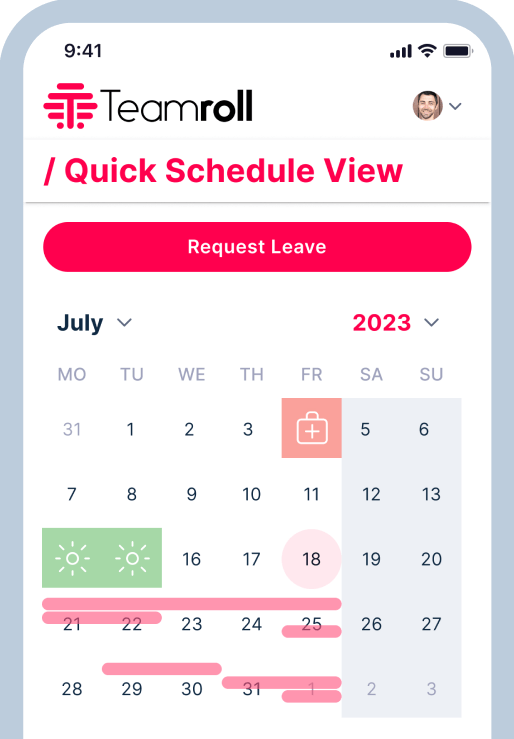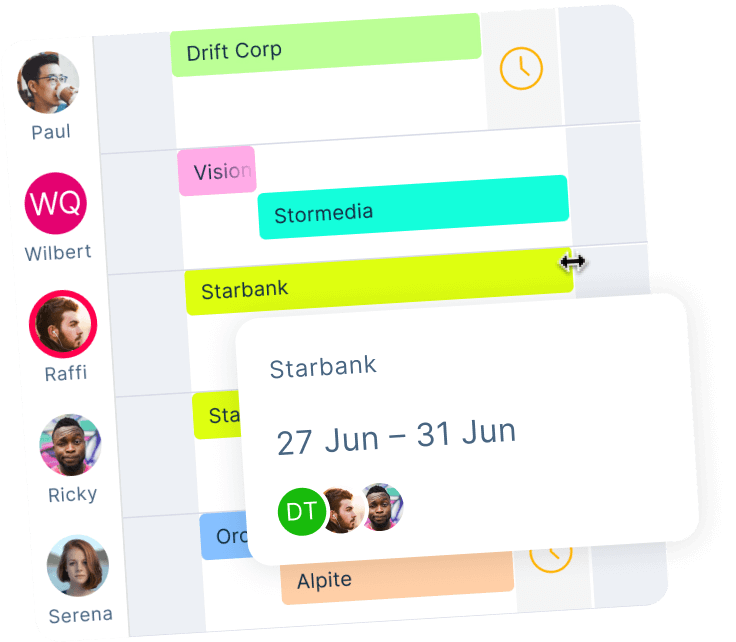How to Organize Your Team at Work: Transforming Your Team’s Productivity
If you’re reading this, chances are you’re wondering how to organize your team at work. Maybe you’ve realized that organizing and managing a team towards a common goal takes intentionality and diligence.
As a project manager or team leader, you understand the value of a cohesive group working efficiently together.
However, achieving this can often feel like an uphill battle. The good news is that with the right strategies and techniques, you can overcome the challenges and create a high-performing team that achieves outstanding results.
By adopting a methodical approach to how you structure tasks, communicate with team members, and prioritize work, you can enhance your team’s productivity and accomplish better outcomes with reduced stress.
Regardless of whether you’re managing a small team in a small business or leading a project team with multiple stakeholders, the following tips and strategies can assist you in maximizing your team’s potential and working towards your long-term objectives.
Understanding Team Organization: A Human Approach
When it comes to organizing your team, it’s important to understand what team organization is and why it matters.
Essentially, team organization is about creating a structure and plan that helps your team members work together efficiently and effectively towards a common goal.
But why is team organization so important? Because it can have a significant impact on your team’s productivity and work-life balance.
When your team is well-organized, everyone knows what they need to do and when they need to do it. This helps to prevent wasted time and duplicated efforts, which ultimately leads to better results and reduced stress levels.
Different Team Structures and Their Impact on Team Organization
It’s worth noting that different teams have unique structures, and this can have an impact on how you organize your team.
For instance, small teams may require less hierarchy and more direct communication, while larger teams may need more formal processes and reporting structures to stay organized.
Some common team structures include functional teams, cross-functional teams, and project teams.
Here’s a brief introduction to each of these common team structures:
- Functional teams: These are teams organized by departments or functional areas within an organization. Members of functional teams are typically grouped together based on their shared expertise, skill set, or job responsibilities.For example, an IT department might have functional teams dedicated to software development, network infrastructure, or cybersecurity.
- Cross-functional teams: These teams consist of members from different departments or functional areas within an organization who come together to work on a specific project or task.The goal of a cross-functional team is to leverage the diverse skills, perspectives, and expertise of its members to achieve a common objective.
For example, a cross-functional team might be assembled to develop a new product, launch a marketing campaign, or improve a business process.
- Project teams: These teams are created specifically to execute a single project or task, with a defined scope, timeline, and budget. Project teams may include members from different departments or functional areas, but their focus is on achieving a specific project goal.Once the project is complete, the team is typically disbanded or restructured for the next project.
For example, a project team might be assembled to design and implement a new software system, build a new facility, or organize a large event.
Some Key Differences Between The Three Team Structures:
Functional teams
- Members are grouped together based on their shared expertise or functional area.
- Members typically report to a single manager who oversees the entire team.
- Communication and collaboration are primarily vertical, within the same functional area or department.
- Goals and objectives are aligned with the functional area or department’s objectives.
Cross-Functional Teams
- Members are from different departments or functional areas and have diverse expertise and skill sets.
- Members may report to different managers or project leads.
- Communication and collaboration are primarily horizontal, across different functional areas or departments.
- Goals and objectives are aligned with the specific project or task that the cross-functional team is working on.
Project Teams
- Members are assembled for a specific project or task and may come from different departments or functional areas.
- Members may report to a project manager or a designated team lead.
- Communication and collaboration are focused on achieving the project goals within a specific timeline and budget.
- Goals and objectives are specific to the project and may be different from the goals and objectives of the departments or functional areas that the members belong to.
Overall, the main difference between these team structures is the way members are grouped together and the focus of their work.
Functional teams are focused on a specific functional area or department, while cross-functional teams and project teams are focused on achieving a specific goal or completing a specific project, and may involve members from different functional areas or departments.
Communication and collaboration also differ between the three structures, with functional teams having primarily vertical communication, cross-functional teams having primarily horizontal communication, and project teams having focused communication on achieving specific project goals.
What are Real Life Examples of These Team Structures?
Functional Teams
Procter & Gamble: This multinational consumer goods company has a functional team structure with teams dedicated to areas such as marketing, finance, supply chain, research and development, and human resources.
Companies that might use this structure: Large organizations with well-defined departments that require specialized skills and knowledge, such as technology companies, financial institutions, and manufacturing companies.
Cross-Functional Teams:
Apple: This technology company is known for its cross-functional approach to product development, with teams made up of members from engineering, design, marketing, and other departments working together to develop and launch new products.
Companies that might use this structure: Companies that are focused on innovation and require collaboration across different departments, such as technology startups, creative agencies, and research and development firms.
Project Teams
SpaceX: This space exploration company uses project teams to design and build rockets, spacecraft, and other equipment for space missions. Teams are assembled for each specific project or mission, and members come from different departments and functional areas.
Companies that might use this structure: Any organization that has projects with defined goals, timelines, and budgets. This structure is common in construction, engineering, software development, and consulting companies.
It’s worth noting that many companies use a combination of these team structures depending on the project or task at hand.
For example, a company may use functional teams for day-to-day operations but assemble a cross-functional team to work on a new product launch.
Supercharge your remote or distributed team culture in 5 minutes or less
Get exclusive content we only share with our email subscribers.
100% private and secure. Unsubscribe anytime.

The Importance of Leadership Skills in Team Organization
At the heart of effective team organization is strong leadership. As a team leader or project manager, you need to communicate clearly, set priorities, and delegate tasks in a way that motivates and empowers your team members.
This requires developing leadership skills like inspiring trust, fostering teamwork, and providing feedback and support.
By setting a good example and providing the necessary tools and resources, you can help your team members stay on track and work together towards a common goal.
Optimizing Team Organization
To maximize productivity and ensure a cohesive work environment, it’s essential to implement effective best practices for team organization. Here are some recommendations to help establish an efficient and productive team:
Setting Specific Goals and Establishing an Organized Plan
Establishing specific goals and creating a plan is critical to keeping your team focused and on track. Break down the larger project into smaller, more manageable tasks, assigning them to individual team members, and setting realistic deadlines to ensure timely completion.
The Benefits of Using Project Management Software and Other Productivity Tools
Project management software such as Trello, Asana, Microsoft Teams, or our very own Teamroll can be invaluable for keeping your team organized, on track, and productive. These tools help streamline workflows, track progress, and improve collaboration among team members.
Strategies for Effective Communication and Regular Check-Ins
Effective communication is vital to team organization. Encourage open communication channels and hold regular check-ins to ensure everyone is working towards the same goal. Encourage team members to ask questions, share ideas, and provide feedback.
How to Create an Organizational Structure That Works for Your Team
Since every team is unique, there is no one-size-fits-all approach to team organization. Creating an organizational structure that complements your team’s specific needs and work styles is important.
Consider team size, project complexity, and individual strengths and weaknesses when structuring your team.
The Benefits of Regular Team Meetings and How to Make Them Effective
Regular team meetings provide a forum for discussing progress, identifying issues and roadblocks, and keeping everyone informed.
To make meetings more effective, establish an agenda, limit the duration, and encourage participation from all team members. Follow up on action items and provide updates at the next meeting.
Strategies for Boosting Team Organization and Motivation
Team organization and motivation are crucial for ensuring the success of any team. Here are some strategies for boosting team organization and motivation and encouraging team members to stay organized and on-task:
- Set specific tasks and deadlines: Clearly defining tasks and deadlines can help team members stay focused and motivated to complete their work on time.
- Use a to-do list: Encourage team members to use a to-do list to prioritize their daily tasks and stay organized.
- Use digital tools: Project management software or task management apps mentioned previously can help team members stay organized and focused.
- Build a positive team culture: Foster a supportive team culture that encourages teamwork and collaboration. When team members feel supported, they are more likely to stay organized and on-task.
- Provide support and training: Ensure that team members have the necessary training and support to stay organized and complete tasks efficiently. Providing feedback and additional training when necessary can be helpful.
Tips for effective delegation of tasks and responsibilities:
- Choose the right people: Delegating tasks to team members with the necessary skills and experience can help ensure that tasks are completed on time and to a high standard.
- Clearly communicate expectations: Clearly communicating expectations for the task, including deadlines and quality standards, is essential for effective delegation.
- Provide support: Offering resources and support, such as access to specific tools or additional training, can help team members complete tasks more efficiently.
- Follow up: Regularly following up with team members can help ensure that tasks are on track and provide additional support if needed.
Ways to build a positive team culture and encourage teamwork:
- Lead by example: Team leaders should model the behavior they want to see in their team, such as being organized, communicating clearly, and demonstrating a positive attitude.
- Encourage open communication: Creating an environment where team members feel comfortable communicating openly and honestly can help avoid misunderstandings and ensure everyone is on the same page.
- Celebrate success: Recognizing and celebrating team successes can help build morale and encourage teamwork.
- Encourage teamwork: Encourage team members to work together and support each other, perhaps through team-building activities or exercises that help them get to know each other better and build stronger relationships.
This can help create a positive team culture where everyone feels comfortable sharing ideas and collaborating on projects.
Team Organization in Remote Work Settings
With the rise of remote work, team organization has taken on a new level of complexity. Remote work comes with its own set of challenges, such as limited face-to-face interaction, varying work styles, and time zone differences. All these factors can impact team organization and productivity.
Challenges of Team Organization in Remote Work Settings
One of the biggest challenges of team organization in remote work settings is effective communication. Without the ability to meet face-to-face, team members need to rely on other forms of communication, such as email, instant messaging, or video conferencing.
Misunderstandings can arise if team members don’t communicate effectively, and it can be challenging to convey tone and context through digital communication.
Another challenge is ensuring that everyone is on the same page regarding task priorities, deadlines, and deliverables. In remote work settings, it’s not always easy to know what other team members are working on, and it can be difficult to track progress and deadlines.
Strategies for Encouraging Team Organization Among Remote Workers
To overcome the challenges of team organization in remote work settings, it’s important to establish clear expectations and guidelines for communication and collaboration.
Here are a few strategies that can help:
- Regular check-ins: Encourage regular check-ins with team members to keep everyone accountable and informed. This can be in the form of one-on-one meetings or team-wide meetings, depending on the size and structure of your team.
- Establish clear priorities and deadlines: Clearly define priorities and deadlines to avoid confusion and ensure that everyone is working towards the same goal.
- Encourage collaboration: Encourage team members to work together and share ideas, even if they are working remotely. This can help build a sense of community and increase team productivity.
The Benefits of Using Digital Solutions and Project Management Software
Digital solutions and project management software can be great for remote teams. They can help teams stay organized, manage tasks and deadlines, and ensure that everyone is on the same page.
With the right tools, remote teams can stay connected and productive, even when working from different locations.
Tips for Team Leaders and Project Managers
Prioritize Tasks and Set Due Dates
As a team leader or project manager, it’s essential to prioritize tasks based on their importance and set clear due dates for specific goals.
This helps to ensure that everyone on the team is aware of what needs to be accomplished and when it needs to be completed.
By having clear deadlines in place, team members are more likely to stay on track and avoid procrastination.
Manage and Delegate Tasks
Effective task management and delegation are critical to team organization. As a leader, it’s your responsibility to ensure that everyone on the team has a clear understanding of their responsibilities and that tasks are delegated to the appropriate team members based on their skills and expertise.
By delegating tasks effectively, you can reduce the workload on yourself while ensuring that all tasks are completed on time.
Stay Organized and Maintain a Clear Picture
Staying organized is crucial for effective team organization. It’s important to have a clear understanding of the big picture and how each task contributes to the overall success of the project.
One way to do this is by using project management software or other digital tools to keep track of tasks and deadlines.
Regularly reviewing your task list and adjusting priorities is another thing you can do to help you stay on top of things and maintain a clear picture of what needs to be done.
Provide Adequate Training and Support
It’s important to provide adequate training and support for team members, particularly for new employees. This can help ensure that everyone on the team has the skills and knowledge necessary to complete tasks effectively.
Providing ongoing training and support can help team members feel supported and valued, which can boost team performance and encourage teamwork.
Final Thoughts
As a team leader or project manager, you play a critical role in organizing and guiding your team towards success. By implementing the best practices and tips discussed in this post, you can foster a culture of organization, delegation, and collaboration within your team. Plus, by investing in your team’s organization and productivity, you’ll be setting your team up for success and paving the way for future achievements.


